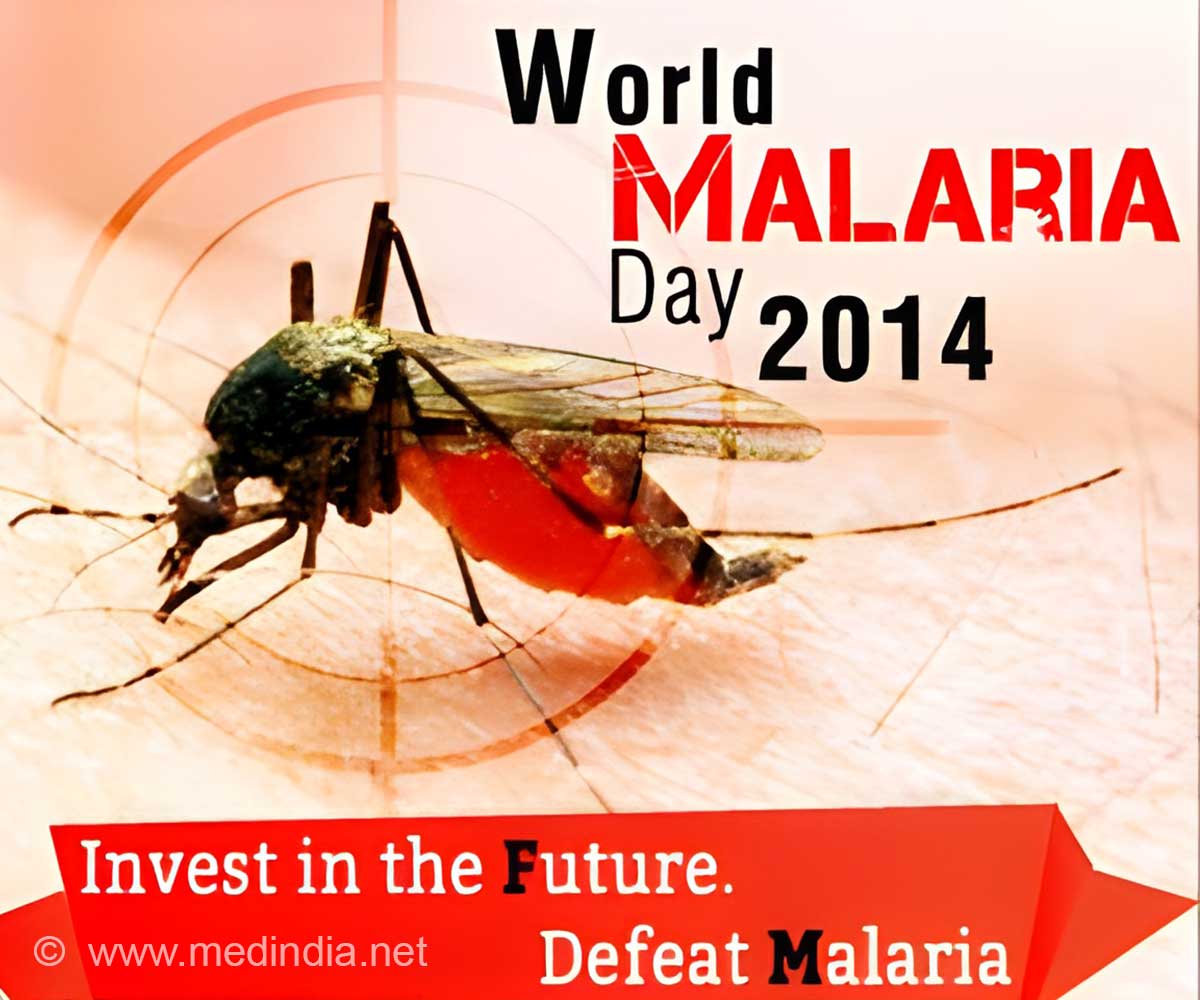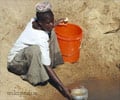This World Malaria Day, April 25, 2014, World Health Organisation aims to protect the future and make the world malaria free for which it is working in tandem with countries of the world.

With the aim of spreading awareness, education and understanding about malaria and looking for means to prevent and control it, the WHO started World Malaria Day in 2007.
Global Scenario of Malaria
According to WHO, India is one of the 10 countries in South-East Asia Region where malaria is endemic and claims thousands of lives. And 40 per cent of the world population which faces the risk of malaria reside in South-East Asia Region, which houses a quarter of the world population.
Malaria occurs mostly in poor, tropical and subtropical areas of the world. The Democratic Nigeria, Republic of Congo and India are the worst affected countries. According to WHO Director-General Margaret Chan, the fact that so many people are infected and dying from mosquito bites is one of the greatest tragedies of the 21st century.
Dr Valecha says, “Globally, malaria is a major problem in African continent with Plasmodium falciparum as the predominant species and very efficient malaria vectors. The disease burden, including death, is mainly in children under 5 years of age in sub-Saharan Africa.”
WHO Statistics on Malaria
In 2012, malaria killed an estimated 1,300 children everyday, or one child almost every minute.
The governments of the world are working on eliminating the menace of malaria as it costs a lot to human lives and resources. Approximately US$ 5.1 billion is needed every year to fight back the disease. In 2012, total international and domestic funding for malaria was US$ 2.5 billion.
A Lancet report says that funds hindered the work of providing insecticide-treated bednets in sub-Saharan Africa, where 150 million nets are needed annually to protect people from the malaria parasite. But only 70 million were delivered in 2012. However, the situation improved in 2013.
Since 2000, there has been a 42 per cent decline in global malaria mortality rates. But still a lot needs to be done.
Condition of Malaria in India
Unicef says that in India, of the 1.2 billion people, 80.5 per cent reside in malaria-prone areas. According to Dr Valecha, “In India, 22 per cent population lives in areas with high transmission and approximately 30 per cent of disease burden is reported from children.”
With such huge figures, India has a big task before it – to get free of malaria by 2015. Malaria is the deadliest of all vector-borne diseases. About 10 per cent of the total cases of malaria are reported from urban areas. Maximum numbers of malaria cases are reported from places like Chennai, Vishakhapatnam, Vadodara, Kolkata, New Mumbai, and Vijayawada.
Today, malaria in urban areas is a big problem due to unplanned expansion of cities and towns. A surge in construction in cities has led to migration of workers to cities, causing problems in sanitation and water storage in slums. All these lead to spread of mosquitoes which transmit malaria.
As per details on National Institute of Malaria Research website, Northeastern states (mostly Assam, Arunachal Pradesh, Meghalaya, Tripura), tribal and forested parts of Odisha, Jharkhand, Chhattisgarh, Madhya Pradesh, Maharashtra, Andhra Pradesh, West Bengal and few districts in Karnataka and Gujarat report high malaria burden.
The WHO put malaria deaths in 2006 at 21,000, but a nationwide mortality survey in India pointed out that these figures were too low and were underestimated.
A Lancet report of 2010 said that malaria may be causing about 200,000 deaths a year in India among people below the age of 70. Still, there has been a decline in malaria cases in India. According to National Vector Borne Disease Control Programme, there were 10,67,824 malaria cases in 2012 and in 2013, the figure was 8,36,916.
Initiatives by Indian Government to Tackle Malaria
When the government launched the National Malaria Eradication Programme in 1958, Urban Malaria was not a part of it. But by 1970s, the government found out that cases of rural malaria came down while cases in urban areas went up. It was then that the government started Urban Malaria Scheme in 1971.
The Government is also taking steps to provide mosquito nets, medicines, etc. to people in order to stop malaria from spreading. It is also spraying DDT to kill the deadly mosquitoes.
“The government has also introduced rapid diagnostics and Artemisinin-based combination medicine for treatment, apart from providing long-lasting insecticidal bed nets for prevention,” said Dr Valecha.
She further added that all these have been made available at the level of community health workers who are given incentives for diagnosis and providing complete treatment.
But a setback for India is the growing resistance to the antimalarial drug chloroquine. Although the problem is seen in the entire country, it is more evident in regions with intense P. falciparum transmission such as North Eastern states, Odisha, construction sites, big metropolitan areas and areas along international borders.
Symptoms of Malaria
Symptoms of malaria may appear in cycles. But initially, the symptoms are sometimes similar to those of many other infections caused by bacteria, viruses or parasites. The person may have fever, chills, headache, sweats, fatigue, nausea and vomiting, enlarged spleen, and muscle pain. In rare cases, malaria can even affect functioning of brain or spinal cord, causing seizures or loss of consciousness.
Infection with the P. falciparum parasite is more serious and may become life-threatening. If not diagnosed on time, P. falciparum can be deadly as it is becoming chloroquine-resistance, said experts.
The symptoms and cycle of fever may vary with different parasites. Fever can occur every 48 hours if you are infected with P. vivax or P. ovale and it can come every 72 hours if you are infected with P. malariae. P. falciparum usually does not cause a regular, cyclic fever.
Children and pregnant women form the high-risk category and they should be very careful and watchful.
People working in forests, army troops and population living in remote inaccessible areas which lack access to health services are more vulnerable to malaria, said Dr Valecha.
Prevention of Malaria
The best way to protect yourself from malaria is to keep away from mosquito bites by being vigilant and following certain guidelines.
A person should stay inside when it is dark outside and wear protective clothes, such as long pants and long-sleeved shirts.
One should use insect repellent. One should use mosquito nets that are treated with insecticide such as permethrin or deltamethrin. But one should see to it that these insecticides are effective against mosquitoes because in some areas, mosquitoes have become resistant to permethrin and deltamethrin.
One should use flying-insect spray indoors around sleeping areas. One should also take certain anti-malarial medicines when travelling to regions affected by malaria.
Malaria is caused by parasite called Plasmodium, which is transmitted through bites of infected mosquitoes. In the human body, the parasites grow in liver and then infect red blood cells. Malaria is transmitted by an infected female Anopheles mosquito.
According to Dr Valecha, people need to work to get rid of malaria. She says that patients should report to community health workers or health facility for proper diagnosis of fever, in urban areas, patients should insist on diagnosis of fever and not accept treatment empirically, doctors should give complete treatment after diagnosis as per national guidelines and over-the-counter sale of anti-malarials without prescription should be discouraged.
Vaccination for malaria can play an important role in our war against the deadly disease. Though different quarters are working on the issue, it will take some time before it is commercially available.
References:
1. http://www.cdc.gov/malaria/malaria_worldwide/impact.html
2. http://www.who.int/malaria/en/
3. http://www.nvbdcp.gov.in/UMS.html
4. http://www.ncbi.nlm.nih.gov/books/NBK1720/
Source-Medindia











